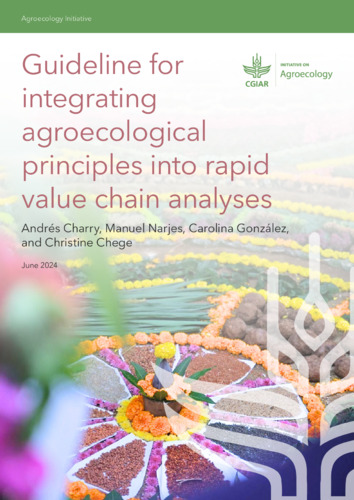Guideline for integrating agroecological principles into rapid value chain analyses
CGIAR’s Agroecology Initiative (AE-I) has the objective of testing agroecological approaches across different socioeconomic, political, and geographic contexts, and using the learnings on what agroecological innovations work, where, and for whom, to craft replicable agroecological transition models that can subsequently be applied to the food, land, and water systems of other low- and middle-income countries.
One of the proposed avenues for accelerating the transition is addressed by the AE-I’s Work Package Three (WP3), Inclusive business models and financing strategies, which aims at facilitating the adoption and scaling of agroecological principles through the co-development and upgrading of business models at key segments of agrifood systems (Atta-Krah et al., 2021). The latter requires a general knowledge of the actors, products, and their interactions within their corresponding value chains, as well as an understanding of their current alignment with agroecological principles.
For this reason, in this guideline, we present a framework that integrates traditional value chain analysis methodologies with the agroecological principles proposed by the High Level Panel of Experts on Food Security and Nutrition of the Committee on World Food Security (HLPE, 2019) (Table 1), which include interventions and practices across various levels of value chains and food systems. The framework has been designed to provide a rapid and systematic approach for (a) identifying opportunities, bottlenecks, and promising business models across different value chain levels; (b) identifying the extent to which agroecological principles are currently being incorporated along value chains; and (c) assessing the scaling potential of agroecological innovations currently in place in value chains, with the aim of improving their overall performance and catalyzing their agroecological transition.

